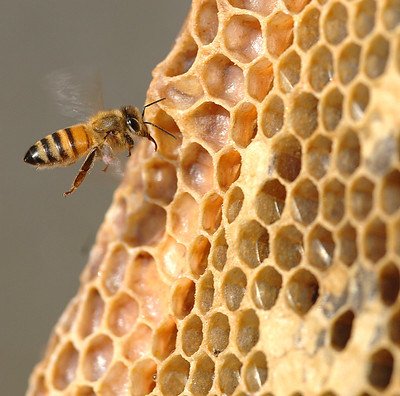OSU researchers lead $4.2 million USDA grant to study disease plaguing honeybees

CORVALLIS, Ore. (KTVZ) — Researchers at Oregon State University have received a $4.2 million grant from the U.S. Department of Agriculture’s National Institute of Food and Agriculture to study European foulbrood disease, which is killing honeybees and affecting pollination of specialty crops.
The project is a partnership between OSU, Washington State University, University of California, Davis and Mississippi State University. Researchers will investigate the factors contributing to high incidence of the disease, then share their findings with beekeepers and growers to inform and improve mitigation efforts.
European foulbrood disease is caused by a bacteria that infects honey bees at the larval stage, turning the newly hatched bee larvae into brown mush within a few days. The disease has been on the rise in recent years, causing persistent honeybee colony declines and hurting beekeepers — especially those who pollinate early-season specialty crops like highbush blueberries.
“It’s an enigmatic disease. We understand the basics, but we don’t know why this disease flares up some years and then goes down,” said project director Ramesh Sagili, a professor in OSU’s College of Agricultural Sciences and an apiculturalist with OSU Extension Service. “Researchers have done smaller targeted studies of this disease, but no one has really investigated it comprehensively with a large-scale, longitudinal study.”
The four-year project has several components. Researchers will follow honeybee hives as they are transported by commercial beekeepers to pollinate almonds and then blueberries across Washington, Oregon, California and Mississippi. They’ll tag 1,536 hives for ongoing observation, which includes checking the frames for signs of foulbrood, estimating colony populations and surveying the microbiota of bees and larvae.
Where they see evidence of foulbrood, researchers will collect samples and send them back to the lab for genetic testing to determine new bacterial variants and whether certain strains of the bacteria are more virulent or pervasive than others.
They will monitor the colonies’ nutrition by installing pollen traps on the hives to collect pollen as the bees re-enter their hives. This will allow researchers to determine whether the quantity or diversity of pollen plays a role in hives’ susceptibility to foulbrood.
The research teams will also document climatic factors like temperature and humidity to discover if they have an impact on the incidence and prevalence of the disease.
In the second and third years of the grant, Sagili said the team will focus on developing disease mitigation strategies for beekeepers, such as whether or when to apply antibiotics to their hives, the most effective time to split colonies and how often to replace honeycomb.
“The beekeeping industry and specialty crop producers such as blueberry and almond growers are really excited about this grant,” he said. “It’s a huge, multidisciplinary collaborative effort with the states, the beekeepers and the farmers involved in this project.”
In addition to Sagili, OSU researchers Jeff Chang, Andony Melathopoulos, Maude David and Tim Delbridge will be working on the grant, which also includes education and outreach with OSU Extension.
Field work will start in February in California, where beekeepers from around the country bring their hives to pollinate almonds as one of the first crops of the year.